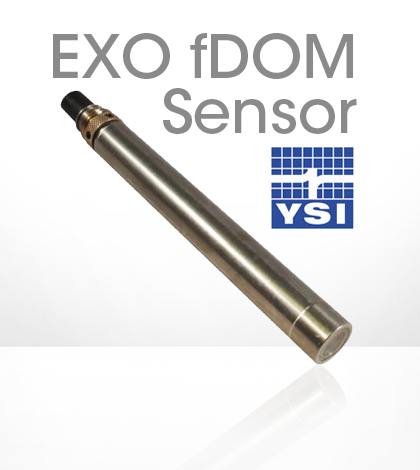YSI’s fDOM sensor sheds light on organic matter

The new YSI EXO Sonde expands monitoring capabilities for users compared to YSI’s the previous generation of sondes. One new feature for the EXO is a fluorescent dissolved organic matter probe that measures light-absorbing particles in water.
The sensor is another attempt by YSI to provide instrumentation options to those in the waste water industry, or anyone interested in measuring dissolved organic matter alongside other parameters.
YSI’s fDOM sensor detects only on a narrow wavelength range. “The wavelength at which (particles) absorb light optimally and then the wavelength that they emit, or fluoresce light optimally, is unique to that molecule,” said Rob Ellison, YSI EXO director of research and development, during a webinar on the fDOM sensor. “So, because of that specificity we can develop very sensitive instruments.”
High sensitivity helps when monitoring in situ because many fluorescent particles are in low concentrations in nature, Ellison added.
YSI’s fDOM sensor has the capability to measure a specific class of fluorescent particles, known as “peak C” fluorescent particles. The sensor excites humic particles that respond to 300 to 350 nanometer wavelengths, like phytoplankton, soil particles, sediment, water tracing dyes and some pollutants.
The sensor’s fluorescence detector then takes a reading of particles that vibrate and fluoresce to a wavelength of 400 to 460 nanometers.
The sensor’s optical design means it is has simple plug and play operation after calibration.
An fDOM sensor may aid waste water managers looking to measure total organic carbon in their discharge. People monitoring biological influences of dissolved organic matter may find fDOM particularly useful. It detects light absorbing particles, which may detract light from photosynthesizing creatures and plants. The sensor can determine particle quantity and light absorbance characteristics of those particles when coupled with an optical turbidity sensor.
The sensor can be used to map plumes through spot sampling or underway measurements.
Ellison recommends getting a background baseline of clean water in the area of study to improve result interpretation.
Sources of interference for fDOM sensors include high turbidity water or a large amount of light absorbing particles, which scatter the sensor’s ultraviolet light. “As the dissolved organic matter increases, that material is absorbing more and more of the excitation light that is emitted by the fDOM sensor,” said Ellison. “…Over a certain fDOM concentration you start seeing some nonlinearity in your data.”
Temperature also plays a role in fDOM signal. Temperature decreased fDOM readings by one percent per degree Celsius. But, the EXO sonde can compensate for temperature effects with user input based on location.
The fDOM probe is made of heavy-duty, fouling-resistant titanium with a damage-resistant sapphire glass lens. Its Impulse Wet Mate connector can be plugged in underwater. The sensor also has internal memory so that it can be calibrated on one EXO sonde and transferred to another.
Click here for specs and pricing.





0 comments